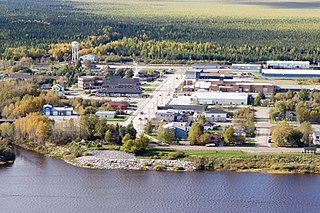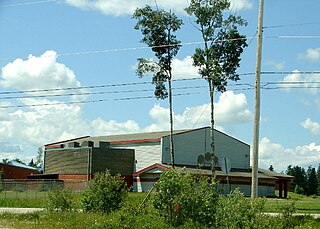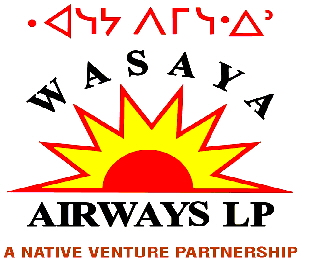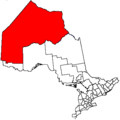
Moosonee is a town in northern Ontario, Canada, on the Moose River approximately 19 km (12 mi) south of James Bay. It is considered to be "the Gateway to the Arctic" and has Ontario's only saltwater port. Nearby on Moose Factory Island is the community of Moose Factory to which it is connected by water taxi in the summer and ice road in the winter.
In Canada, an Indian reserve is defined by the Indian Act as a "tract of land, the legal title to which is vested in His Majesty, that has been set apart by His Majesty for the use and benefit of a band." Reserves are areas set aside for First Nations, one of the major groupings of Indigenous peoples in Canada, after a contract with the Canadian state, and are not to be confused with indigenous peoples' claims to ancestral lands under Aboriginal title.

Greenstone is an amalgamated town in the Canadian province of Ontario with a population of 4,636 according to the 2016 Canadian census. It stretches along Highway 11 from Lake Nipigon to Longlac and covers 2,767.19 km2 (1,068.42 sq mi).
First Nations in Ontario constitute many nations. Common First Nations ethnicities in the province include the Anishinaabe, Haudenosaunee, and the Cree. In southern portions of this province, there are reserves of the Mohawk, Cayuga, Onondaga, Oneida, Seneca and Tuscarora.

The Attawapiskat First Nation is an isolated First Nation located in Kenora District in northern Ontario, Canada, at the mouth of the Attawapiskat River on James Bay. The traditional territory of the Attawapiskat First Nation extends beyond their reserve up the coast to Hudson Bay and hundreds of kilometres inland along river tributaries. The community is connected to other towns along the shore of James Bay by the seasonal ice road/winter road constructed each December, linking it to the towns of Kashechewan First Nation, Fort Albany, and Moosonee Attawapiskat, Fort Albany, and Kashechewan operate and manage the James Bay Winter Road through the jointly owned Kimesskanemenow Corporation, named after the Cree word for "our road" -kimesskanemenow. Attawapiskat is the most remote northerly link on the 310 km (190 mi) road to Moosonee. They control the reserves at Attawapiskat 91 and Attawapiskat 91A.

The Kashechewan First Nation is a Cree First Nation band government located near James Bay in Northern Ontario, Canada. The community is located on the northern shore of the Albany River. Kashechewan First Nation is one of two communities that were established from Old Fort Albany in the 1950s. The other community is Fort Albany First Nation, which is now located on the southern bank of the Albany River. The community is connected to other towns along the shore of James Bay by the seasonal ice road/winter road, linking it to the towns of Attawapiskat, Fort Albany, and Moosonee.
Eabametoong, also known as Fort Hope or Eabamet Lake by Canada Post, is an Ojibwe First Nations band government in Kenora District, Ontario, Canada. Located on the shore of Eabamet Lake in the Albany River system, the community is located approximately 300 km (190 mi) northeast of Thunder Bay and is accessible only by airplane via Fort Hope Airport or water, or by winter/ice roads, which connect the community to the Northern Ontario Resource Trail. The Eabametoong First Nation Reserve is completely surrounded by territory of the Unorganized Kenora District.
Webequie First Nation is located on the northern peninsula of Eastwood Island on Winisk Lake, 540 km (336 mi) north of Thunder Bay in Ontario, Canada. Webequie is a fly-in community with no summer road access. The primary way into the community is by air to Webequie Airport or winter road, which connects to the Northern Ontario Resource Trail. The First Nation have the 34,279 ha Webequie Indian reserve. The Webequie or Webiqui Indian Settlement also have reserve status. Webequie First Nation is a member of the Matawa First Nations, a Regional Chiefs' Council and a member of the Nishnawbe Aski Nation.

NAC Air was a Canadian regional airline that began operations in 2000. Its main base was at the Thunder Bay International Airport. NAC Air was a 100% First Nations-owned company, owned by the communities of Eabametoong, Neskantaga, Webequie, Sachigo Lake, and Sandy Lake
Nibinamik First Nation, also known as Summer Beaver Band, is a small Oji-Cree First Nation reserve in Northern Ontario, located on the Summer Beaver Settlement that is connected to the rest of the province by its airport, and a winter/ice road that leads to the Northern Ontario Resource Trail.

Nishnawbe Aski Nation is a political organization representing 51 First Nation communities across Treaty 9 and Treaty 5 areas of Northern Ontario, Canada. Re-organized to its present form in 1981, NAN's original objective was "to represent the social and economic aspirations of our people at all levels of government in Canada and Ontario until such time as real effective action is taken to remedy our problems."

Constance Lake First Nation is an Oji-Cree First Nations band government located on the shores of Constance Lake near Hearst, Cochrane District in northeastern Ontario, Canada. It is directly north of the community of Calstock along a continuation of Ontario Highway 663. Constance Lake First Nation is home to close to 1605 members of Cree and Ojibway with approximately 820 living on reserve. The reserves, Constance Lake 92 and English River 66, total 7,686 acres (3,110 ha) in size.

Matawa First Nations, officially as the Matawa First Nations Management, Inc., is a non-profit Regional Chiefs' Council representing Ojibway and Cree First Nations in Northern Ontario, Canada. The Council provides advisory services and program delivery to its ten member-Nations.
McFaulds Lake is a lake located in the Unorganized Part of Kenora District in northwestern Ontario, Canada. It is part of the James Bay drainage basin and is in the Hudson Bay Lowlands area. There are two unnamed inflows, at the south and north. The primary outflow is an unnamed stream at the northeast leading to the Attawapiskat River, which itself flows to James Bay.
Attawapiskat Lake is a lake in Kenora District, Ontario, Canada. The primary inflows are the Otoskwin River, the Marten-Drinking River and the Pineimuta River. The two outflows are the Attawapiskat River and the North Channel, which itself flows into the Attawapiskat River.
The Victor Mine was the first Canadian diamond mine located in Ontario, and De Beers' second diamond mine in Canada. It is located in the Northern Ontario Ring of Fire, in the James Bay Lowlands 90 kilometres (56 mi) west of Attawapiskat in the remote northern part of the province. In June 2005, the Attawapiskat First Nation voted in favour (85.5%) of ratifying the Impact Benefit Agreement (IBA). Construction of the mine began in February 2006 which created 3200 positions; mining and operations will create around 400 permanent positions. The Victor Mine is an open-pit mine, with a processing plant, workshops, and an airstrip located on site. By 2013–2014 royalties collected from De Beers Victor Mine amounted to $226. At that time De Beers was continuing to pay off its "$1 billion investment to build the mine and from now until it closes, the company expects to pay tens of millions of dollars in royalties." The mine completed mining and processing in 2019 and has moved to a shut-down phase including demolition of infrastructure and rehabilitation of the site.
The Ring of Fire is a vast, mineral-rich region located in the remote James Bay Lowlands of Northern Ontario, Canada. Spanning approximately 5,000 square kilometres (1,900 sq mi), the area is rich in chromite, nickel, copper, platinum group elements, gold, zinc, and other valuable minerals. Discovered in the early 21st century, the Ring of Fire is considered one of the most significant mineral deposits in Canada, with the potential to greatly impact the nation's economy and global mining industry. The development of this region has been a subject of ongoing debate, as stakeholders weigh the economic benefits against environmental concerns and the rights of Indigenous communities in the area. Despite these challenges, the Ring of Fire had remained a focal point for the Canadian mining sector and government, as well as international investors. By July 2023, the federal and provincial governments were no longer in agreement on priorities for federal funding of the Ring of Fire. Georgia Lake lithium project, KGHM's Victoria mine proposal and the Onaping Depth nickel project—which will produce minerals required for the low carbon economy—had become higher priorities, particularly as the Ring of Fire project is situated in a region of "vast, environmentally sensitive...peatlands".

Wasaya Airways LP is a First Nations-owned domestic airline with its headquarters in Thunder Bay, Ontario, Canada. Its main hubs are the Thunder Bay International Airport and the Sioux Lookout Airport; however, it also offers a charter and cargo service from a base in Red Lake Airport and Pickle Lake Airport. In 2003, Wasaya Airways bought the rights to serve remote First Nations communities from Bearskin Airlines. The airline also supplies food, clothing, hardware and other various supplies to 25 remote communities in Ontario.

North Star Air is a Canadian charter, passenger and cargo airline headquartered in Thunder Bay, Ontario, with secondary passenger hub in Sioux Lookout, Ontario, and cargo hubs located in Pickle Lake, Red Lake, Kapuskasing and Thompson, Manitoba. The majority of destinations served are First Nations communities, with regular service to 18 airports under "Flex Flight Passenger Service", and other regional destinations under an on-demand basis. Founded in 1997 as a floatplane operator with two DHC-2 Beaver aircraft based in Pickle Lake, the airline has grown over the years and came under new ownership in 2012. In 2015 Cargo North and North Star Air merged under the North Star banner. In 2022 North Star Air opened up their brand new cargo depot based in Winnipeg.
In Canada, First Nations communities have been under long-term drinking water advisories (DWAs) for decades. A long-term drinking water advisory is an advisory that has been in place for over a year.












